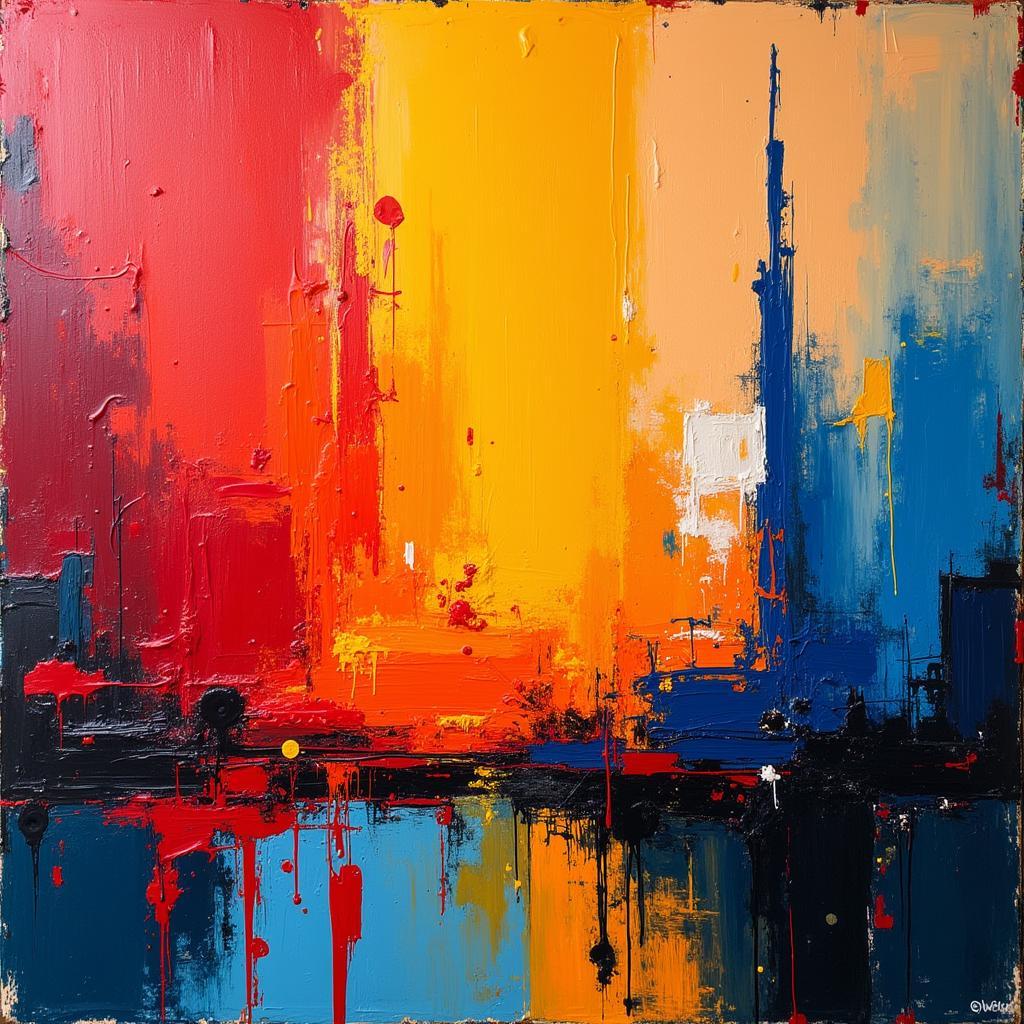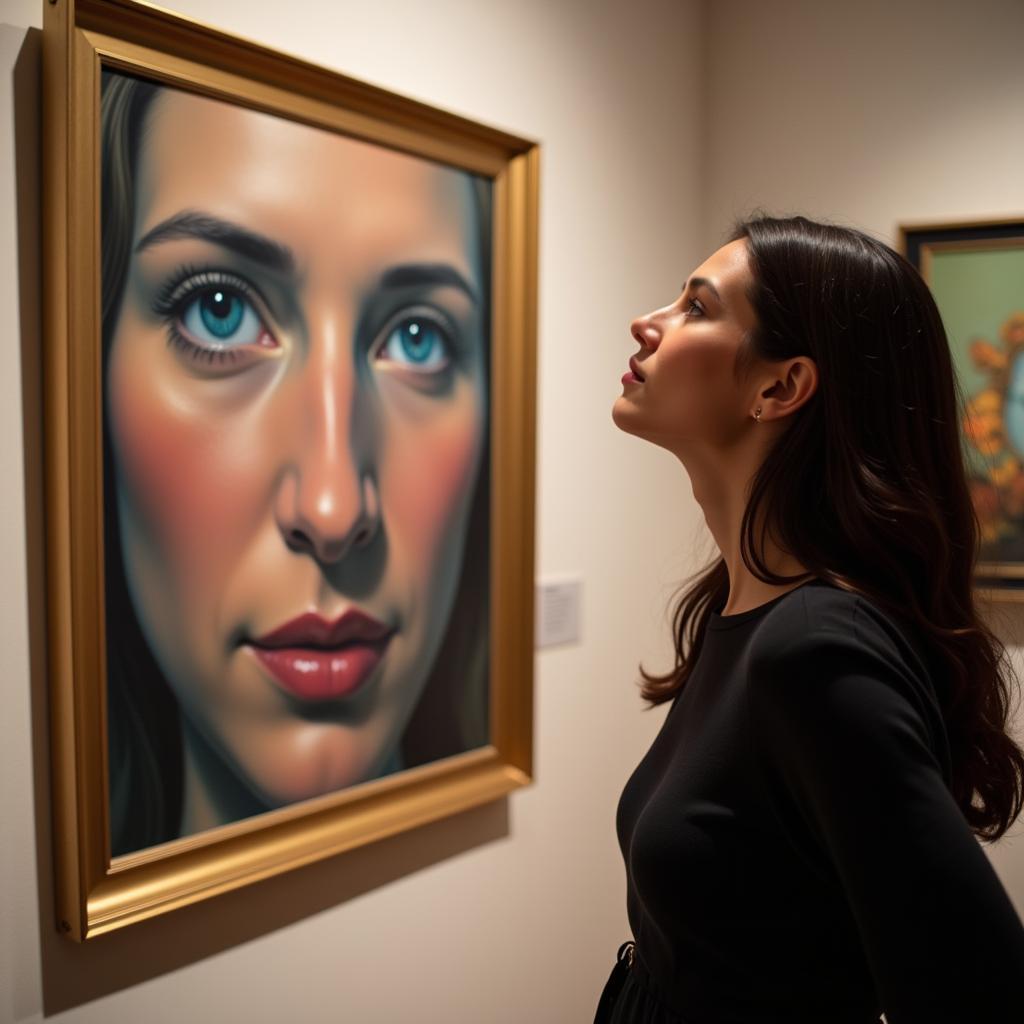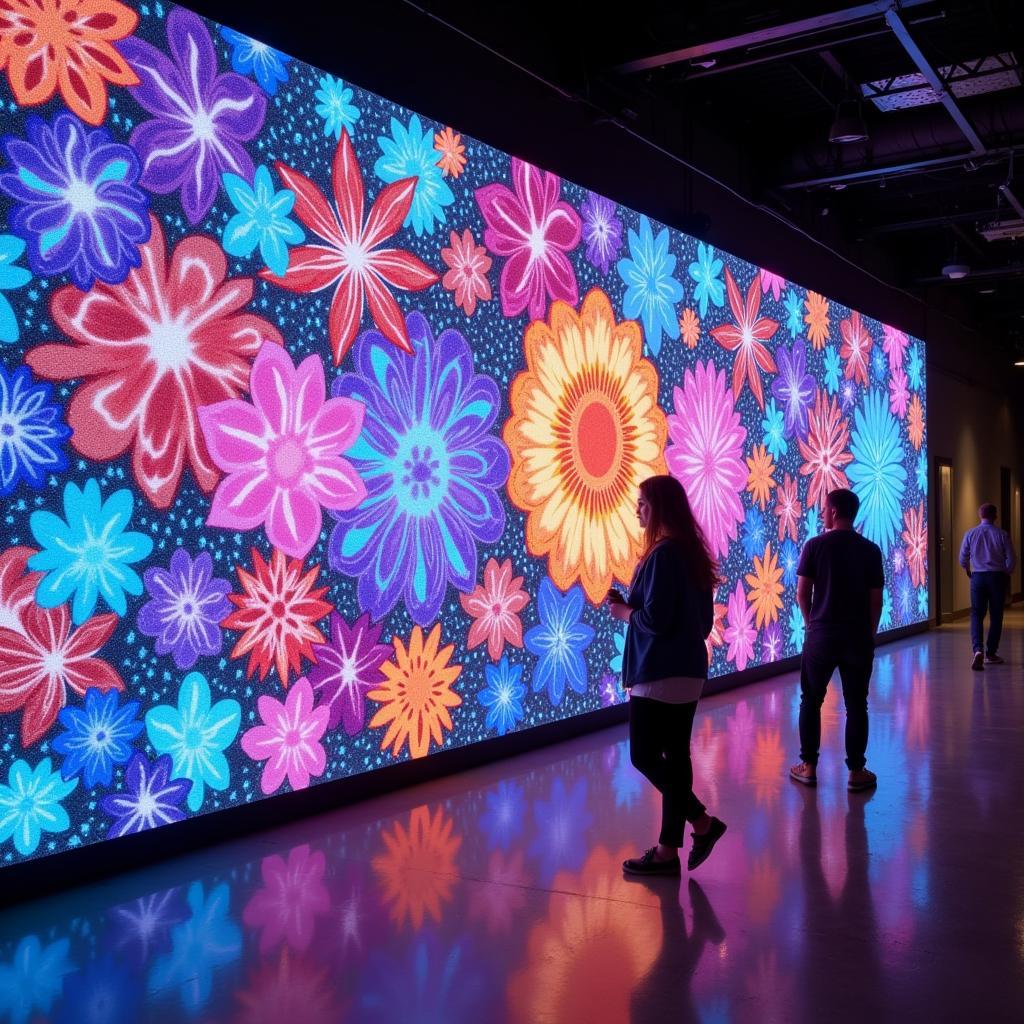Unveiling Abstract Art with Deep Meaning
Abstract art, with its non-representational forms and colors, often leaves viewers wondering about its deeper meaning. It’s a world where emotions, concepts, and experiences are translated into visual language, inviting us to connect on a more intuitive level. This journey into Abstract Art With Deep Meaning will explore its power, history, and the diverse ways artists use it to communicate profound ideas. We’ll uncover the secrets behind seemingly simple shapes and vibrant hues, and learn to appreciate the rich tapestry of abstract expression. Let’s dive in!
Exploring the Depths of Abstract Art with Deep Meaning
Abstract art isn’t about perfectly replicating reality. Instead, it’s about capturing the essence of a feeling, a thought, or an experience. Think of it as a visual poem, where colors rhyme and shapes dance to create a symphony of meaning. While a realistic painting of a flower might show its physical beauty, an abstract piece might represent the fleeting nature of life or the delicate balance of nature. What makes abstract art so compelling is its subjectivity – each viewer brings their own experiences and interpretations to the canvas, creating a unique and personal connection with the artwork.
Perhaps you’ve seen floral art paintings and wondered about the artist’s intent. Similar to abstract art, representational art can also convey layered meanings.
The beauty of abstract art with deep meaning lies in its ambiguity. It doesn’t dictate a single narrative but rather invites dialogue and contemplation.
Decoding the Language of Abstract Art
How do we begin to understand abstract art with deep meaning? It’s a journey of exploration, not a destination. Start by observing the elements:
- Color: What emotions do the colors evoke? Does a fiery red represent passion, or perhaps anger? Does a calming blue signify peace, or perhaps melancholy?
- Shape: Are the shapes sharp and angular, suggesting tension and dynamism? Or are they soft and organic, evoking a sense of flow and tranquility?
- Composition: How are the elements arranged? Is there a sense of balance or asymmetry? Does the composition draw your eye across the canvas in a specific way?
By considering these elements, we can begin to unravel the layers of meaning embedded within the artwork.
 Exploring the Deep Meaning in Abstract Art
Exploring the Deep Meaning in Abstract Art
The History and Evolution of Abstract Meaning
Abstract art isn’t a recent phenomenon. Its roots can be traced back to various cultures and time periods. From ancient cave paintings to Islamic calligraphy, artists have long explored non-representational forms of expression. The early 20th century, however, saw the emergence of abstract art as a distinct movement. Pioneers like Wassily Kandinsky and Piet Mondrian sought to move beyond the limitations of representational art, exploring the spiritual and emotional power of pure abstraction.
Have you ever considered the symbolic power of scripture art on canvas? Religious art, although often representational, can also hold deep abstract meaning.
Creating Your Own Abstract Art with Deep Meaning
You don’t need to be a professional artist to create abstract art with deep meaning. The process can be incredibly therapeutic and insightful. Here are a few tips to get you started:
- Start with an intention: What feeling, thought, or experience do you want to express?
- Choose your medium: Experiment with different materials like paint, charcoal, or collage.
- Let go of expectations: Don’t worry about creating a “perfect” piece. Embrace the process of exploration and discovery.
- Reflect on your creation: What does your artwork say to you? What emotions or thoughts does it evoke?
Creating abstract art is a journey of self-discovery. It’s a chance to connect with your inner world and express yourself in a unique and powerful way. Perhaps you’d enjoy paddle art as a starting point. It encourages a playful approach to artmaking.
Connecting with Abstract Art on a Deeper Level
Abstract art challenges us to look beyond the surface and engage with art on a more intuitive level. It invites us to interpret, to feel, and to connect with the artist’s vision in our own personal way. By embracing the ambiguity and exploring the depths of abstract art with deep meaning, we open ourselves to a world of creativity and emotional resonance. Embracing abstract art is like embarking on a conversation with the unseen, where colors whisper secrets and shapes tell stories.
You might be surprised by the emotional depth you find in seemingly simple expressions like patriotic art. Often, the most powerful art is that which resonates with our shared human experience.
 Connecting with Abstract Art on a Deeper Level
Connecting with Abstract Art on a Deeper Level
Conclusion
Abstract art with deep meaning is more than just pretty pictures. It’s a powerful form of expression that connects us to our emotions, our thoughts, and our shared human experience. By exploring the elements of color, shape, and composition, we can begin to understand the language of abstract art and unlock its hidden depths.
FAQ
- What is the purpose of abstract art? To express emotions, ideas, and experiences in a non-representational way.
- How do I interpret abstract art? Focus on the elements of color, shape, and composition, and consider your own emotional response.
- Is abstract art easy to create? Anyone can create abstract art, but mastering it takes practice and exploration.
- Who are some famous abstract artists? Wassily Kandinsky, Piet Mondrian, and Jackson Pollock are just a few.
- Where can I learn more about abstract art? Museums, galleries, and online resources offer a wealth of information.
6.. Can abstract art be used in interior design? Absolutely, it adds a unique and personalized touch. - What is the difference between abstract and non-objective art? While related, non-objective art strictly avoids any reference to the external world.
Common Scenarios and Questions
Scenario: A viewer feels confused by an abstract painting.
Question: What should I do if I don’t “get” abstract art?
Answer: There’s no right or wrong way to interpret it. Focus on your emotional response and the elements of the artwork.
Scenario: An aspiring artist wants to create abstract art.
Question: How do I start creating my own abstract art?
Answer: Experiment with different mediums and focus on expressing your inner world.
Further Exploration
Explore more about art and Gwen are not in love and discover the intriguing intersection of art and narrative.
Contact Us
For further assistance, contact us at Phone: 02462573573, Email: [email protected] or visit us at Savico Megamall, 7-9 Đ. Nguyễn Văn Linh, Gia Thụy, Long Biên, Hà Nội 10000, Việt Nam. We have a 24/7 customer support team.


